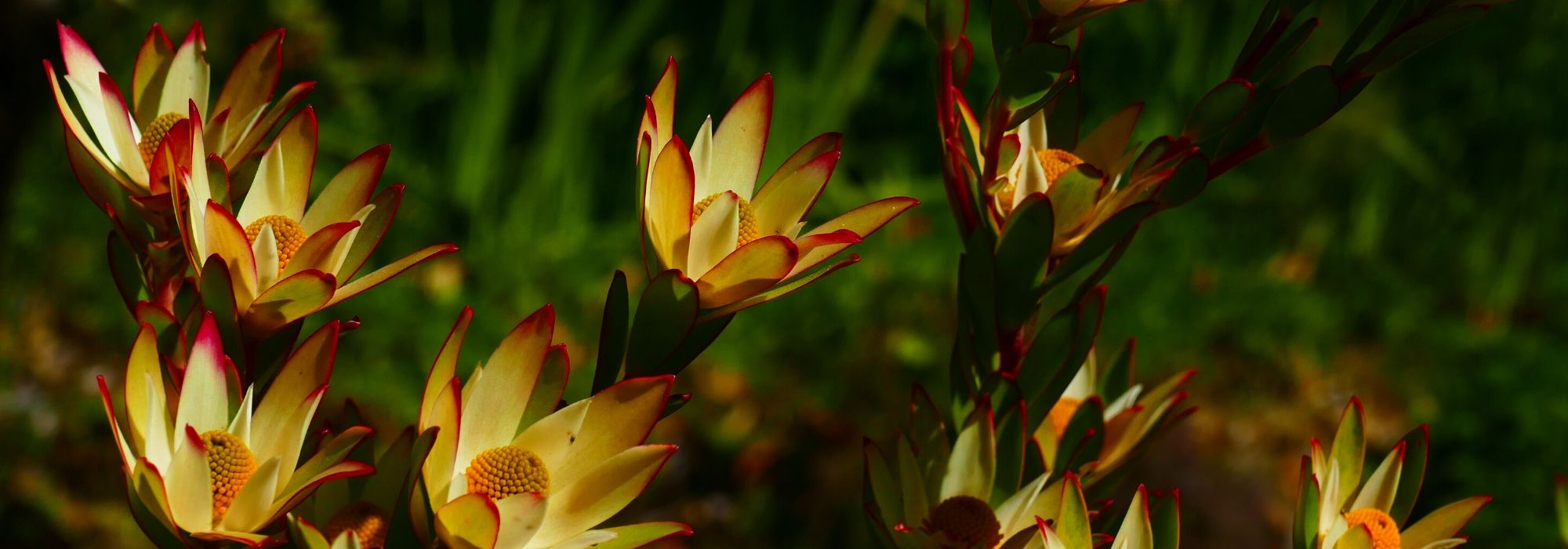
Leucadendron: planting, growing, and care
Contents
Leucadendron in a nutshell
- Leucadendron is an evergreen bush with a very exotic appearance
- Its fine foliage, changing with the seasons, is particularly elegant
- From spring to summer, it captivates with its magnificent, brightly coloured and unique floral bracts, resembling stars
- Very frost-sensitive, it will easily find its place in southern gardens, dry areas, or by the sea
- Outside of our mildest regions, it is grown in a container or large pot and kept frost-free throughout the winter
A word from our expert
Leucadendron is an evergreen bush with a very exotic appearance, valued for its long flowering period from spring to summer, and its remarkably colourful changing foliage. It has nothing to do with the game Miramagia, the valleys of Leucadendron, and its magical community!
This sensational plant is a cousin of the Proteas and is increasingly used in contemporary or Mediterranean-inspired displays.
It produces long, eye-catching bracts adorned with warm, changing tones, such as Leucadendron ‘Safari Sunset’, Leucadendron ‘Sundance’, Leucadendron ‘Jack Harre’, and the sumptuous Leucadendron ‘Fireglow’. The Leucadendron argentum stands out with its lovely silvery, fluffy foliage.
It forms a modest-sized bush, reaching heights and widths of 1 m to 2.5 m in favourable conditions. Native to Southern Africa, this frost-sensitive bush prefers to be planted in coastal gardens sheltered from severe frosts and wind.
Growing in large pots is essential outside the mildest areas of our country; it should be brought indoors to protect it from frost as soon as the first chills arrive.
Particularly suited to the Mediterranean climate, it enjoys warmth, full sun, and requires a poor, well-drained soil to thrive.
With its very graphic appearance, it will add a lot of originality to large slopes or seaside gardens, whether planted alone or in groups.
Discover this bush without delay, as it will bring a touch of originality to your garden!
Description and botany
Botanical data
- Latin name Leucadendron
- Family Proteaceae
- Common name Cape tree, silver tree
- Flowering February to August depending on varieties
- Height 1 to 2.50 m
- Exposure Sun
- Soil type Stony (poor and draining), acidic to neutral
- Hardiness -5°C
Leucadendron is a shrub or bush from the Proteaceae family, endemic to the Cape of Good Hope region in South Africa, hence its nickname “Cape tree”, as well as Australia and South Africa. It grows spontaneously in thin coastal and mountainous areas (fynbos) with a Mediterranean climate.
The genus comprises around 80 species (Leucadendron argenteum, Leucadendron salignum, Leucadendron laxum, Leucadendron laureolum) that have given rise to magnificent cultivars (‘Safari Sunset’, ‘Sundance’) and horticultural hybrids (Leucadendron laureolum x salignum) derived from various shrub species of Leucadendrons.
It forms a dense, bushy, upright, rounded, or elongated shrub depending on the varieties, reaching heights of 1.50 to 15 m in its natural habitat. In our gardens, it will rarely exceed 2-2.50 m in height under favourable conditions.
This woody and ramified plant boasts beautiful evergreen foliage. The multiple slender stems, sometimes remarkably coloured red, bear entire, linear to needle-like leaves, ovate to elliptical in shape, measuring 10 cm by 2.5 cm, arranged spirally along the branches. They are soft to the touch, green at bud burst, sometimes marked with dark red along the edges, and covered with a waxy bloom. The Leucadendron argenteum is distinguished by its strongly silvered, fluffy, and silky foliage.
This elegant foliage sometimes takes on beautiful purplish hues during full flowering.
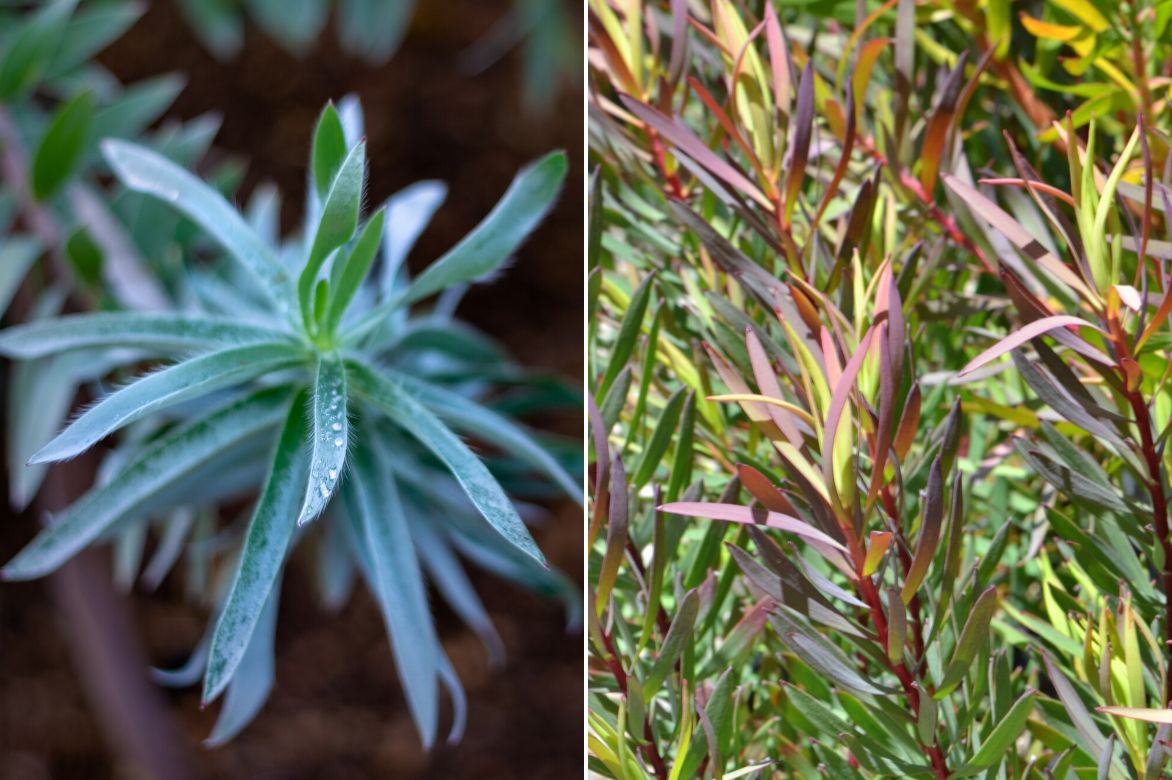
The foliage of Leucadendrons is undeniably elegant! (L. argenteum, silvered and fluffy / L. salignum ‘Chief’)
Leucadendron is valued for its very long flowering period, which is both abundant and sensational. From the end of winter, generally from February to September depending on our climates and the varieties, large solitary flowers appear as if “placed” at the tips of the stems. The main attraction of this shrub is not its flower, but rather the colourful elliptical bracts that surround it. The small flowers are gathered in globose green, bright yellow, or orange-red cones surrounded by a collar of long, waxy, sharply pointed, brightly coloured bracts, arranged in a star-like pattern.
These terminal heads bloom in conical, spherical, vase-like, or cup-shaped forms depending on the species and varieties. These floral bracts are dioecious, meaning that male and female plants can be distinguished: male specimens are more conspicuous and form round, luminous, and shiny inflorescences, clearly visible among the foliage.
The often fragrant bracts emit a yeast-like scent. They display very vivid colours that sometimes change over time, shifting from yellow to orange, green to purple, and reddish-purple to pale yellow (Leucadendron ‘Sundance’), giving this flowering a flamboyant appearance.
They make beautiful long-lasting cut flowers for contemporary arrangements. They can be dried and are widely used in floristry.
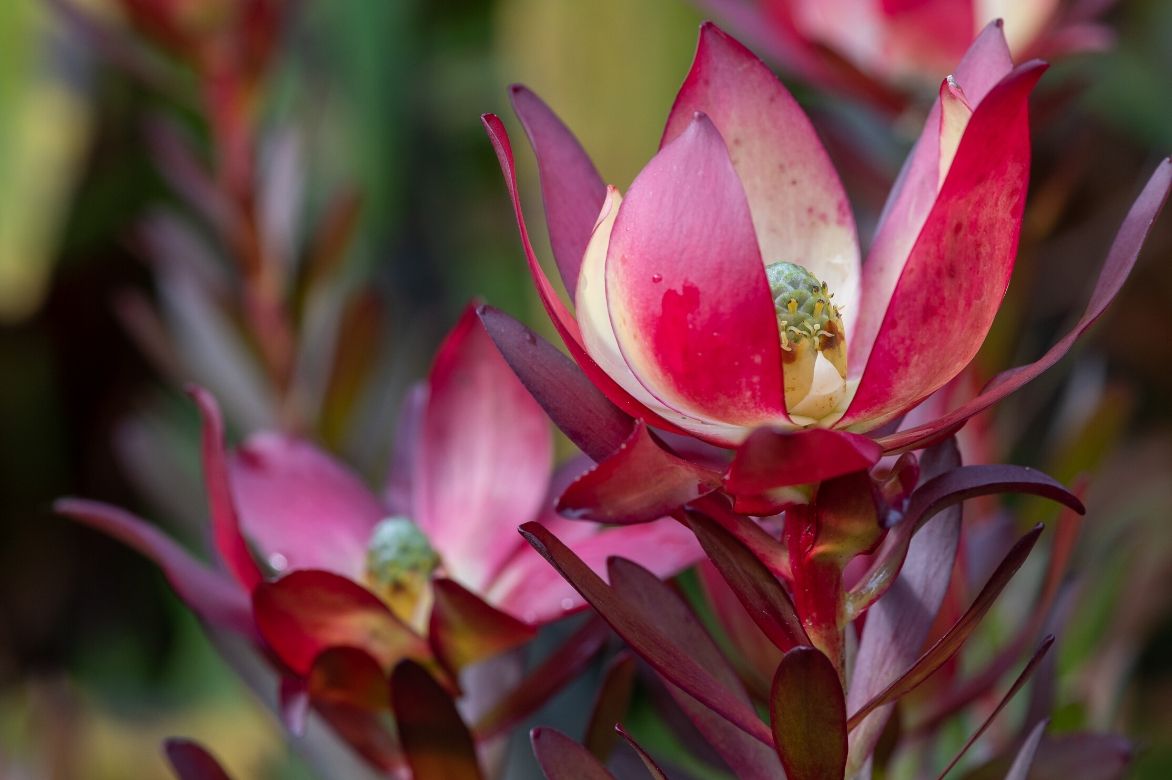 Leucadendron features small flowers in globose cones surrounded by a collar of colourful bracts.
Leucadendron features small flowers in globose cones surrounded by a collar of colourful bracts.
After flowering, the fruit appears as a woody, scaly cone containing numerous seeds. Like all Proteas, the seeds of the Leucadendron require fire to germinate: their reproduction in their native habitat is only made possible by the occurrence of a natural fire.
Leucadendron is a very frost-sensitive shrub (adult specimens are destroyed at temperatures below -8°C). It is a plant suited to very mild climates and should preferably be planted in the ground in coastal gardens that are spared from severe frosts. Growing in large pots is preferable outside the mildest areas of our country, as it will be essential to bring the plant indoors at the first signs of frost.
Main species and varieties
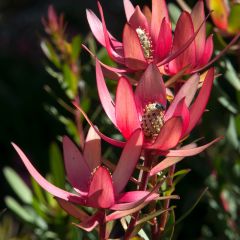
Leucadendron Safari Sunset - Conebush
- Flowering time May to October
- Height at maturity 1,50 m
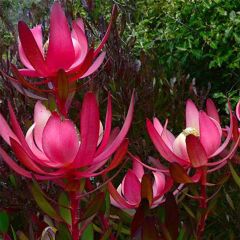
Leucadendron salignum Fireglow - Conebush
- Flowering time March to May
- Height at maturity 1,50 m
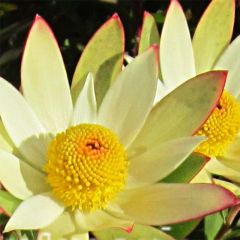
Leucadendron Sundance - Conebush
- Flowering time April to June
- Height at maturity 1,50 m
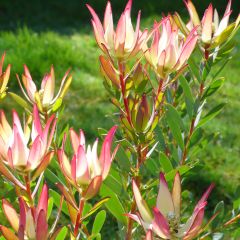
Leucadendron Jack Harre - Conebush
- Flowering time June, July
- Height at maturity 1 m
Discover other Leucadendron
View all →Available in 0 sizes
Available in 1 sizes
Available in 1 sizes
Available in 1 sizes
Available in 1 sizes
Available in 1 sizes
Available in 1 sizes
Available in 1 sizes
Available in 1 sizes
Available in 1 sizes
Planting Leucadendron
Where to plant it?
Leucadendron is a plant suited to very mild climates, particularly adapted to the Mediterranean climate. It is a very tender bush that, once well established, can tolerate occasional frosts of around -5/-8°C in dry soil. Young plants, however, should be sheltered from frost during their first few years. It prefers to be planted in the ground in coastal gardens that are spared from severe frosts. It copes well with sea spray. Outside of these milder areas, particularly in cooler and wetter regions, growing in large pots is obligatory to allow the plant to be sheltered in winter.
It requires a well-exposed position in full sun and well-sheltered from winds. Its foliage displays its most beautiful colours in hot, dry conditions. It thrives in light, poor, well-drained, filtering soil, which is rather acidic, and fresh to dry in summer. Its cultivation can be tricky in overly rich soil. During the summer heat, it will appreciate a very slightly moist soil at its base. Avoid clayey or overly humus-rich and calcareous soils.
It will look stunning when planted alone, on large slopes, or at the back of exotic flower beds, or even in a pot on the terrace. With its preference for a certain acidity, it will make a striking display alongside heather soil shrubs.
When to plant a Leucadendron?
Plant the Leucadendron preferably in spring, from March to June to allow for good root development.
How to plant it?
In the ground
Leucadendron requires well-drained soil.
- Dig a hole at least 3 times wider than the root ball
- Loosen the soil well
- Provide good drainage with river sand or gravel at the bottom of the hole
- Plant in a mixture of leaf compost, heather soil, and very coarse non-calcareous sand
- Backfill the hole, lightly compacting
- Create a small basin to retain water
In a pot
Prefer terracotta pots. The substrate must be sufficiently draining to avoid water stagnation at the roots.
- At the bottom of a container with a diameter of at least 50 cm, spread a good layer of drainage (gravel or clay balls)
- Plant in a mixture composed of 1/3 heather soil, 1/3 coarse non-calcareous sand or pumice, and 1/3 potting soil
- Water generously at planting, then without excess afterwards
→ Learn more about growing Leucadendron in pots in our advice sheet!
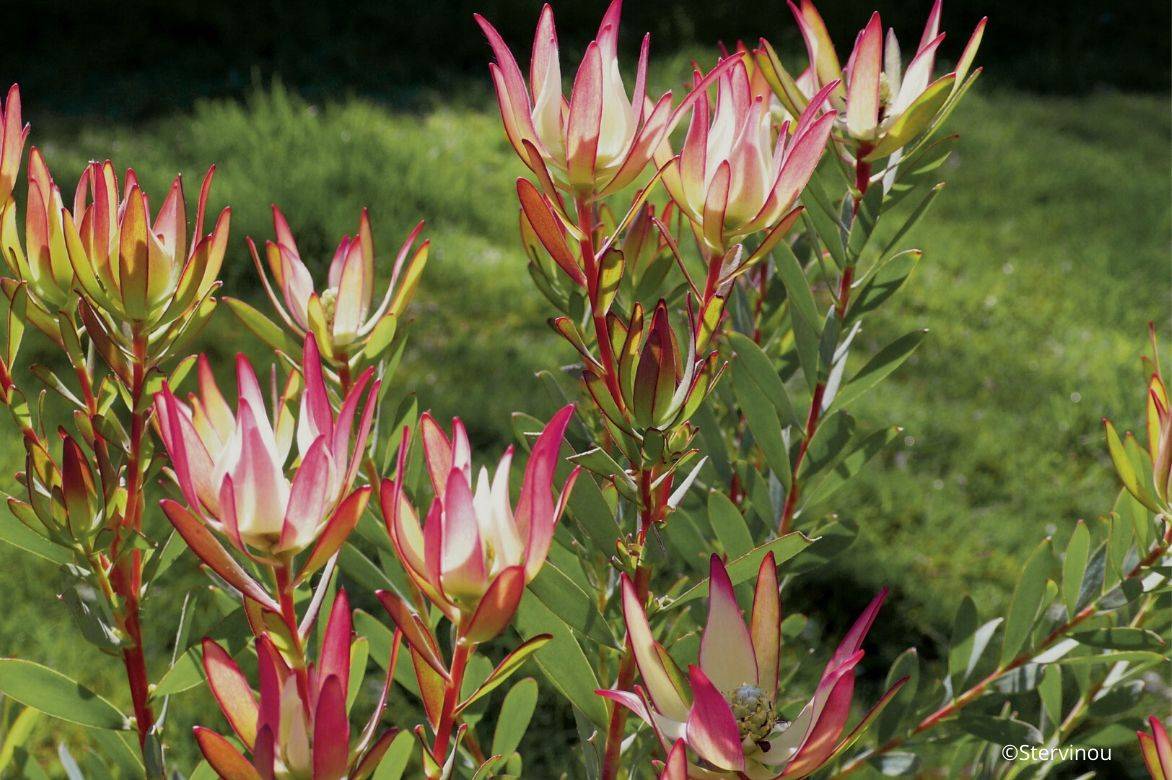
Leucadendron ‘Jack Harre’ with stunning pink and red inflorescences
Read also
10 hardy plants for an exotic dry gardenCare for Leucadendron
Leucadendron is a somewhat delicate plant to cultivate, but once established in suitable conditions, it will require almost no attention.
In the ground
Regular watering is necessary for the first two years. In summer, ensure thorough watering occasionally during heatwaves. It is important to keep the soil cool during hot months. Once well-rooted, it will be drought-resistant. Mulch with a layer of bark or pine needles to maintain acidity and slight coolness in the soil.
This is a bush sensitive to excess phosphates and nitrates, so avoid fertilising.
To maintain a dense and well-ramified habit, trim the tips of the branches by one-third at the end of flowering.
Depending on the region, protect the plant with a double layer of winter fleece or bring the pot into a cold greenhouse before winter.
In a pot
Water regularly and moderately during the growing season, allowing the substrate to dry out between waterings. As soon as the first signs of cold appear, bring your pot into a frost-free, unheated space (around 10 °C).
Water sparingly with non-calcareous water.
Possible diseases
Grown in proper cultivation conditions (sun exposure, well-exposed situation, well-drained soil), the Leucadendron will be relatively resistant to diseases. It is particularly susceptible to root rot.
Multiplication
To propagate your Leucadendron, propagation by cuttings in late spring or summer is the best technique. Sowing this southern plant is complex, as breaking the dormancy of the seeds requires exposure to fire.
Taking cuttings
- In summer, use a pruning shear to take green stems without flowers, about ten centimetres long
- Remove the lower leaves
- Replant in a mixture of sand and heather soil
- Place them in a humid environment at 25 °C, covering with a plastic bag
- Once the young plants are rooted, harden them off for three weeks at 12/15 °C
- Place the cuttings in pots protected from frost until planting in the following spring
Pairing ideas
With its large, curious flowers resembling remarkably coloured bract collars, Leucadendron fits beautifully into contemporary or Mediterranean-inspired gardens.
In a southern exotic garden, it can be planted alone or combined on a dry bank with giant fennel, agaves, cordylines, and Canary viper’s bugloss, all equally undemanding. It can be paired with plants that enjoy the same growing conditions, such as Euphorbia characias, Euphorbia mellifera, and Nolina siberica.
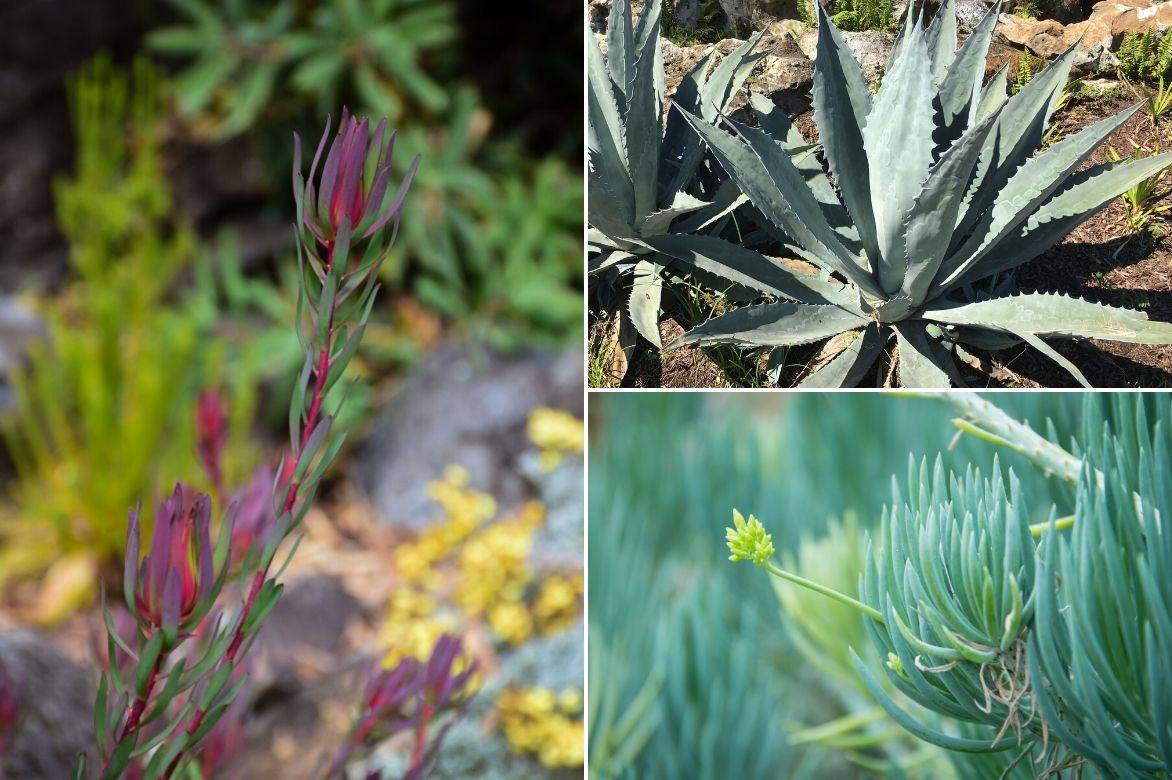
An idea for a dry bank association: Leucadendron (‘Safari Sunset’ for example), Agave americana, and Senecio mandraliscae
Together with its relatives in the Proteaceae family (Grevillea, Royal Protea), they will create splendid, low-maintenance colourful displays.
For a sensational effect, plant it near the architectural Melianthus major and a Yucca rigida. It can also be combined with the blue foliage of a Mexican Blue Palm (Brahea armata) and the blue flowers of ceratostigmas (plumbaginoides, griffitii).
Its preference for a certain acidity makes it well-suited for a bed alongside heather soil plants such as Leptospermum (tea tree), shrubby heathers, camellias, azaleas, rhododendrons, and Japanese maples.
Useful resources
- The most beautiful collection of Leucadendron is with us!
- Discover our tips on how to prune Leucadendron?
- Explore the most beautiful varieties of Leucadendron
- Subscribe!
- Contents
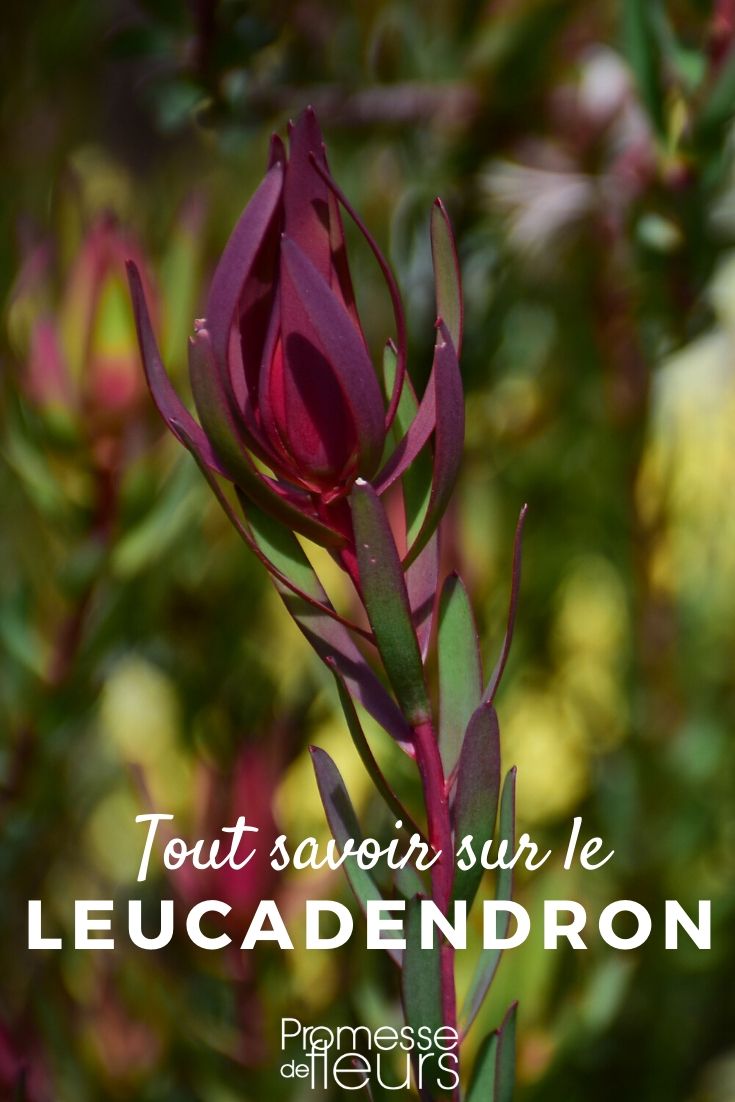































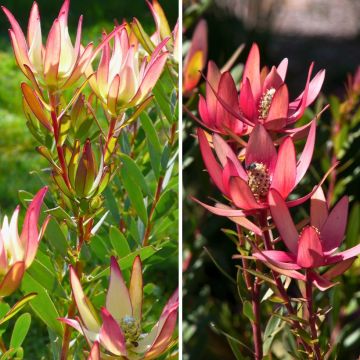


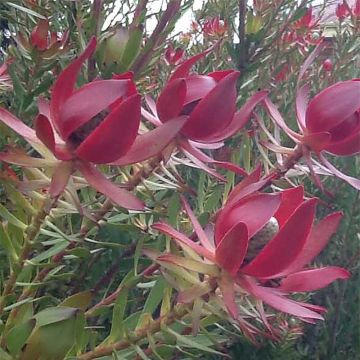
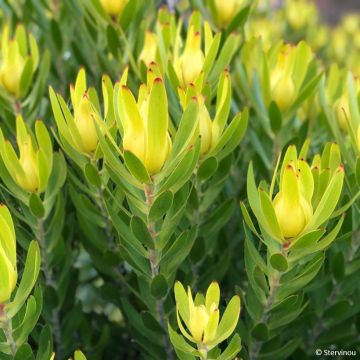
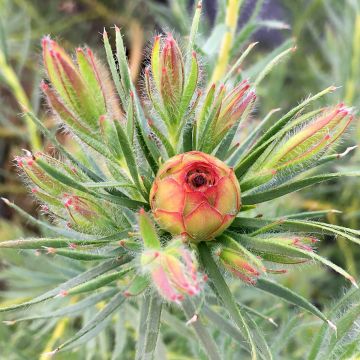
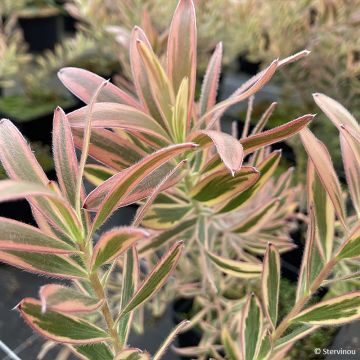
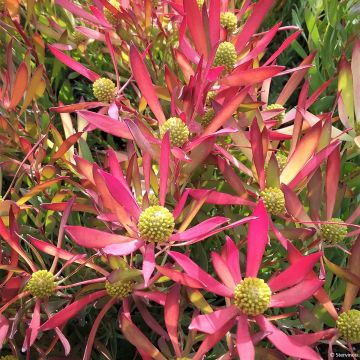
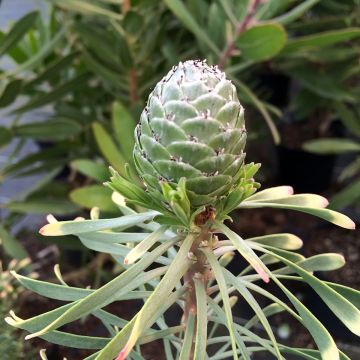
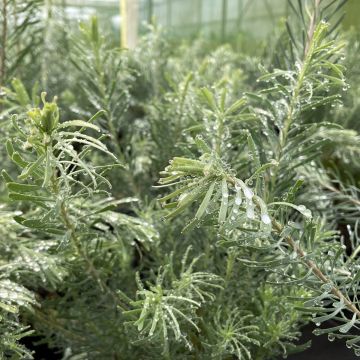
Comments